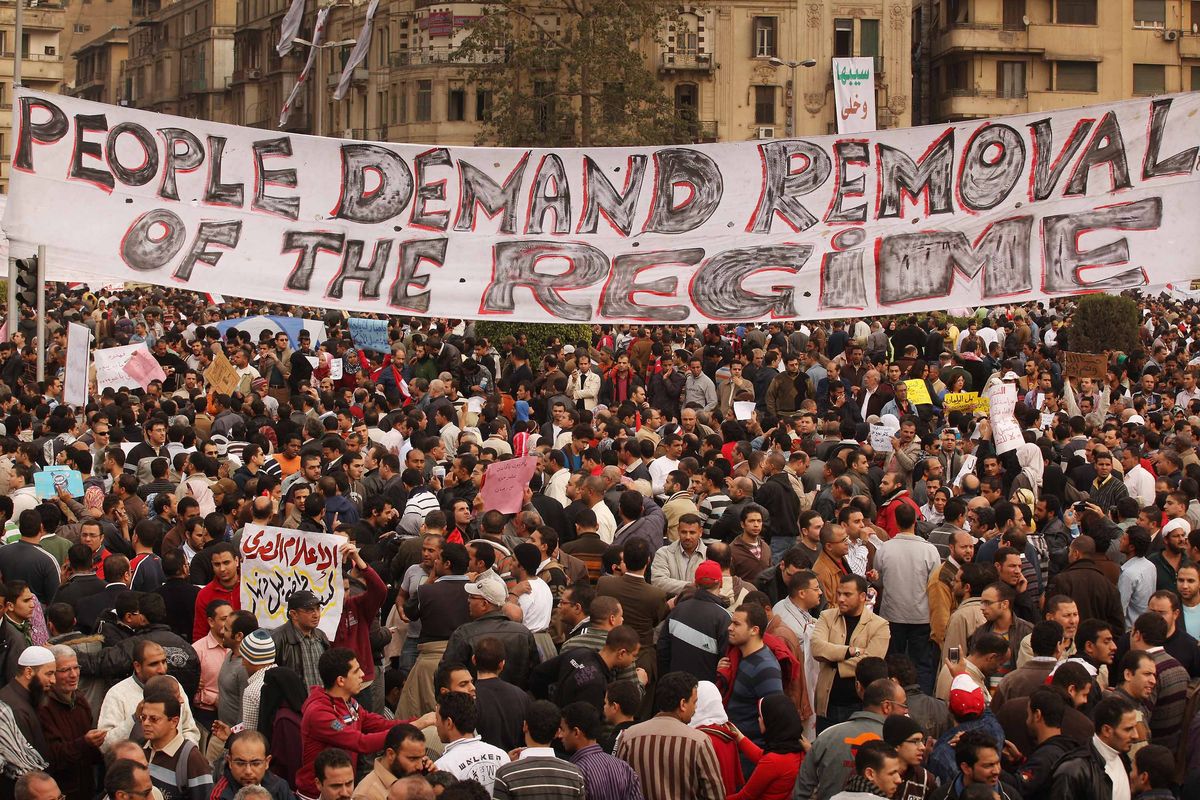A worldwide spark of civil uprising has taken governments by surprise this year, both in the East and West. Ted-Orme Claye explores the reminiscence of the Arab Spring movement and its consequences.
As the UK prepares for a potential change of government via yet another election, many other countries have been witnessing movements aiming to bring about political change through street protesting. From Latin America to Hong Kong to France, people have been pouring out into the streets to protest for a variety of causes, all of them aimed against their respective governments. A region which has seen extensive street protests has been the Middle East. Anti-establishment protests have taken place in Lebanon, Egypt and Iraq, and outside of the Arab-world Iran has also seen large street demonstrations. In Tunisia, one of the few countries to emerge from the 2011 Arab spring in a state of stability, elections have brought a popular anti-government candidate into office, although some issues remain.
Based on these developments, it could certainly be argued that these protests could constitute a “Second Arab Spring,” albeit a much smaller one than the wave of rebellion which took the region by storm in 2011. As with the protests which swept the Middle East eight years ago, these new activists are demanding an end to government corruption, repression and unemployment. In Iraq, the protesters have been overwhelmingly Shia Muslims in the south of the country. Many are unhappy with the usual problems of rampant government corruption and high youth unemployment, which currently stands at 25%.
There is also resentment towards Iranian influence on the Iraqi government. In fact, many of the pro-government militias which have cracked down on the protesters have been hard-line Shia groups affiliated with the Iranian government. The crackdowns have been repeatedly violent – it has been estimated that by the end of October roughly 200 protesters had been killed and 2,000 wounded. Interestingly, although the Shias of Iraq were largely happy with the removal of Saddam Hussein in 2003, many now feel that a return to rule by a strongman figure would actually be beneficial for the country. At least this kind of rule would be efficient they argue, as opposed to the many difficulties faced by the current administration in Iraq, which is based on a power sharing agreement between Shia Arabs, Sunni Arabs and Kurds, the country’s three main ethnic and religious divisions.

The Lebanese protesters have been demonstrating for similar reasons, in addition to other major issues such as electricity shortages and undrinkable water, resulting in the resignation of Prime Minister Saad Hariri. As with Iraq, much of the issues with the Lebanese government lie with its structure, which entails a power sharing agreement between Shias, Sunnis and Christians. Although the agreement helped quell ethnic and religious tensions following the end of the country’s civil war in 1990, it has allowed former warlords to make the transition into politics, leading to rampant corruption. The protests in Iraq and Lebanon clearly demonstrate that despite ongoing civil wars in the region many people are still clamouring for reform and change.
However, the possibilities of this change occurring are very slim and the country’s respective governments are very resistant. There is a real danger that the protests could lead to greater instability in the region. Following the 2011 Arab Spring the “Arab Winter” followed, in which the protests for greater democracy and reform deteriorated into bloody civil wars between the different country’s respective governments and various religious and political factions. Libya, Syria and Iraq are three of the worst cases. With the political situation in Iraq again destabilising, many in the country are worried they will slip back into the state of civil war which dogged the country since the 2003 US-led invasion.

The events in Iraq and Lebanon are also heavily tied to the events in Syria. At its height, the so-called Islamic State group controlled a great deal of territory in Iraq as well as in Syria, and made the northern Iraqi city of Mosul it’s capital. With Turkey’s invasion of northern Syria in full swing, the Kurdish forces have largely abandoned the prisons they were using to hold captured IS fighters, many of whom have now escaped. Many fear this could lead to a resurgence of the group. A resurgent IS could take advantage of the deteriorating situation in Iraq to attempt to recapture its former strongholds such as Mosul and Fallujah. This could also have some negative impacts on Lebanon, as the Shia Hezbollah militant group, which is a political party in Lebanon, has been an active participant in the Syrian conflict.
The situation regarding Israel and Palestine could also potentially threaten Lebanese stability. Following the Israeli assassination of Palestinian Islamic Jihad leader Baha Abu al-Ata in Gaza tensions have been escalating, with rockets being fired at Israel from Gaza, who have responded with airstrikes. So far, at least 34 Palestinians have been killed, but no Israelis. With conflicts escalating all around Lebanon, there is a major worry that the country is also at risk of destabilising. Although the protests against corruption and poverty undeniably have positive motives, the potential spill-over from the ongoing wars in Syria, Libya, Yemen and Israel-Palestine could threaten to turn this “Second Arab Spring” into a “Second Arab Winter.”
Image credit: Peter Macdirmid

